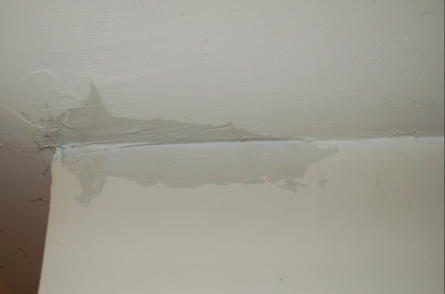Do's & Don'ts of Water Restoration.
Do's & Don'ts of Water Restoration.
Blog Article
This great article which follows on the subject of Ways to Reduce The Risk Of Fire And Water Damage is particularly interesting. Have a go and draw your own findings.

Though water provides life, water intrusion on parts where it's not meant to be can lead to damage. If the water soaks into your structure, it can peel away surface areas and also deteriorate the structure. Mold and also mildew also prosper in a damp environment, which can be hazardous for your health and wellness. Houses with water damage odor stuffy as well as old.
Water can come from lots of resources such as tropical cyclones, floodings, burst pipelines, leaks, as well as sewer problems. In case you experience water damages, it would certainly be great to understand some safety preventative measures. Right here are a couple of guidelines on just how to take care of water damage.
Do Prioritize Home Insurance Policy Protection
Water damage from flooding because of heavy winds is seasonal. You can additionally experience an unexpected flood when a damaged pipeline instantly breaks into your home. It would certainly be best to have residence insurance coverage that covers both disasters such as all-natural tragedies, as well as emergency situations like busted plumbing.
Don't Neglect to Switch Off Utilities
In the event of a disaster, particularly if you stay in a flood-prone location, it would be a good idea to turn off the major electrical circuit. This removes power to your whole home, protecting against electrical shocks when water comes in as it is a conductor. Don't neglect to transform off the main water line valve. When floodwaters are high, furnishings will certainly move around and cause damage. Having the primary valve turned off avoids more damage.
Do Remain Proactive and Heed Weather Notifies
Storm floodings can be extremely unpredictable. Remain prepared as well as proactive if there is a background of flooding in your neighborhood. Pay attention to evacuation cautions if you live near a creek, river, or lake. Secure belongings from the ground floor and basement, after that placed them on the highest feasible degree. Doing so decreases possible building damages.
Don't Overlook the Roof
You can stay clear of rain damage if there are no holes and also leakages in your roofing system. This will certainly protect against water from moving down your walls as well as saturating your ceiling.
Do Take Note Of Tiny Leakages
A ruptured pipe does not take place over night. Normally, there are warnings that suggest you have actually deteriorated pipelines in your home. You may discover bubbling paint, peeling off wallpaper, water touches, water discolorations, or leaking audios behind the wall surfaces. At some point, this pipe will rupture. Ideally, you should not await things to rise. Have your plumbing repaired before it causes massive damages.
Do Not Panic in Case of a Ruptured Pipe
When it comes to water damages, timing is crucial. Thus, if a pipeline bursts in your residence, quickly shut off your main water shutoff to cut off the source. Call a reliable water damages repair specialist for support.
Water provides life, water breach on components where it's not expected to be can result in damage. Residences with water damage odor old and musty.
Water damages from flooding fees to hefty winds is seasonal. You might see bubbling paint, peeling wallpaper, water touches, water spots, or dripping noises behind the walls. When it comes to water damages, timing is crucial.
Some Do's & Don't When Dealing with a Water Damage
DO:
Make sure the water source has been eliminated. Contact a plumber if needed. Turn off circuit breakers supplying electricity to wet areas and unplug any electronics that are on wet carpet or surfaces Remove small furniture items Remove as much excess water as possible by mopping or blotting; Use WHITE towels to blot wet carpeting Wipe water from wooden furniture after removing anything on it Remove and prop up wet upholstery cushions for even drying (check for any bleeding) Pin up curtains or furniture skirts if needed Place aluminum foil, saucers or wood blocks between furniture legs and wet carpet Turn on air conditioning for maximum drying in winter and open windows in the summer Open any drawers and cabinets affected for complete drying but do not force them open Remove any valuable art objects or paintings to a safe, dry place Open any suitcases or luggage that may have been affected to dry, preferably in sunlight Hang any fur or leather goods to dry at room temperature Punch small holes in sagging ceilings to relieve trapped water (don't forget to place pans beneath!); however, if the ceiling is sagging extremely low, stay out of the room and we'll take care of it DO NOT:
Leave wet fabrics in place; dry them as soon as possible Leave books, magazines or any other colored items on wet carpets or floor Use your household vacuum to remove water Use TV's or other electronics/appliances while standing on wet carpets or floors; especially not on wet concrete floors Turn on ceiling fixtures if the ceiling is wet Turn your heat up, unless instructed otherwise

I recently found that article about Fire And Water Damage Prevention when browsing on the web. Those who enjoyed our article kindly make sure you remember to share it. Thanks a bunch for your time. Kindly come by our blog back soon.
Report this page